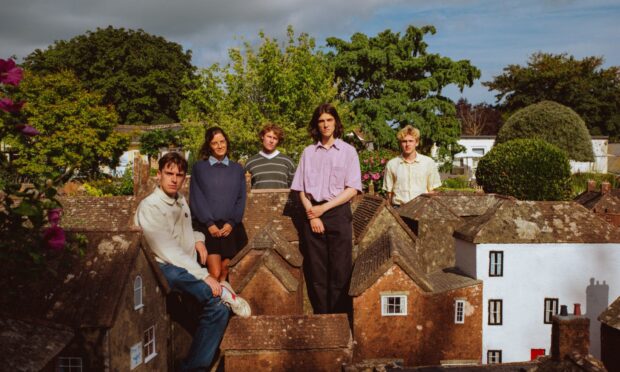Most students will be too young to remember the catastrophic floods that hit Perth in 1993.
But one student visitor to Perth Museum’s new flooding exhibition, Waters Rising, retained strong memories of that January over 30 years ago.
Former council worker Franciszka Doris, or Franka to friends, has enrolled as a mature student on UHI Perth’s contemporary art practice course.
In 1993, though, she worked in the city’s housing department and had to take in her mum when the River Tay broke its banks.
Franka remembers the precise date of the flood, since January 17 1993 was the day after her mum’s birthday.
Her mother, Matilde Lapuc, had stayed over the night before. When Franka returned her home the next morning, sandbags were already starting to be piled up.
That evening, Franka’s son had to get to North Muirton to fetch her again.
Water ‘came up to living room window’
“Water was starting to come through the doors and eventually it came up to her living room window,” she recalls.
“They had the boats out, the fire brigade, everybody was there. It wasn’t chaos, but it was getting quite frantic.
“People were getting upset, so it was quite a distressing time. Nobody had insurance. My mum didn’t for her home and she lost everything on the ground floor.”
Franka’s mum stayed with her daughter for two weeks in the safer district of Letham and thankfully received help from the council’s common good fund, while Franka herself helped her mum’s neighbours, also left homeless.
She was eventually invited to join the council’s emergency and disaster team.
Volunteers ‘in underwear’ to save artefacts
As well as the countless stories of individuals whose lives were upended by the 1993 flood, Waters Rising reminds visitors that much of Perth Museum’s own collection was damaged by the sudden, unexpected deluge.
Mark Simmons, the institution’s senior collections officer, says the floods threatened artefacts ranging from oil paintings to musical instruments stored in its basement.
Volunteers, including Mark’s former boss who would end up wading around in his underwear, arrived when it became clear the museum itself was in danger.
“They started moving the collection into the main galleries from 2pm, then at 3.30pm, all hell breaks loose,” he says.
“That’s when the water comes up through the drains. Then it comes in through all the doors and walls, all at the same time.”
Crocodile caused chaos for Royal Navy
Extra manpower came from Royal Navy personnel brought up from Rosyth to assist in rescuing the collection.
In Waters Rising, their contribution is commemorated in the form of the head of an Indian crocodile, Mark points out.
This specimen had been collected from the River Ganges and donated to the museum in 1938 – and caused a stir during the flooding chaos.
“Apparently the navy got quite a shock when they discovered a crocodile head floating in the water,” he says.
“Obviously it’s become a bit of a staff joke that I’m sure has got bigger in the retelling.”
Where are the museum’s hidden scars?
Mark learned these stories a few months later, when he joined as a temporary assistant to rehouse the collection in a more secure environment.
On a tour of the basement, Mark shows where a loo has been taken out, while drains have been blocked and fire-doors sealed against ingress.
But evidence remains of the destruction the flood caused, with water marks showing how far it rose up surviving cabinets. There is even some silt left under a few drawers.
While Mark oversaw conservation and improved facilities, the city itself installed tougher flood defences.
Yet when waters rose again in 2004, he and colleagues were understandably nervous and once again the collection was moved upstairs, the natural history expert remembers.
“Most staff who worked here had experienced the ’93 flood, so they were very anxious,” Mark says.
“Those involved in the rescue were exhausted and in shock, yet continued trying to save the collections.
“For our department, we moved everything stored below three feet, within the time it would have taken for the water to reach us. Even though the museum didn’t flood (that time), it was still a useful exercise.”
Locals invited to share memories of flood
Following the museum’s smash-hit inaugural show Unicorn, Waters Rising looks at how myths about great floods appear in cultures across the globe, from Noah’s Ark in the Old Testament to native North American tales of angry water gods.
It explores how seasonal rains filling the Nile were vital to ancient Egypt, before focusing closer to home: news footage from ’93 includes kayakers on Perth’s main streets.
A presentation of Helen McCrorie’s 2018 film Against The Flow, meanwhile, explores the impact of losing family mementos in the wake of the 2012 and 2015 floods that hit the Perthshire village of Comrie.
And Perth Museum has also invited locals to add their memories in the form of photographs and postcards.
Waters Rising at Perth Museum runs until March 16 2025.















Conversation